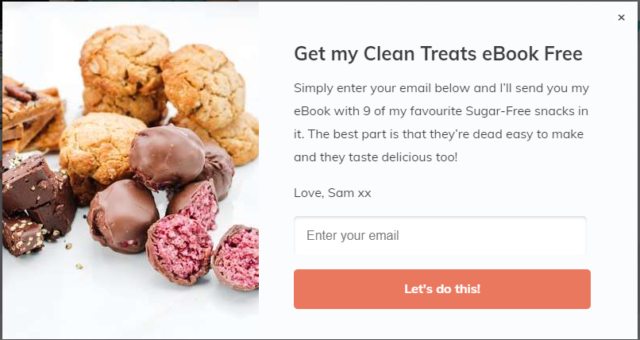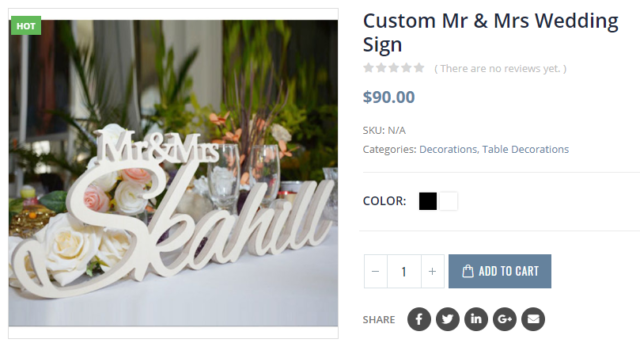Your end goal really is to have each visitor to your website become a lead or end in a sale. The difficulty lies in understanding the different stages of the sales funnel, the different target markets and then creating a way for these target customers (at whichever step of the journey they are at) have a way in which they want to interact with you to become a lead or nurture into a sale. This is where call-to-actions (CTA) come into play.
As the name implies, this tool invites your website visitors into converting. Without it, your potential leads or sales will be left lingering with no direct action for them to take. Surprisingly, 70% of small B2B websites lack a call to action button! That’s 70% of small B2B websites that have no lead generation strategy on their site.
So, let’s take a look at 5 different CTA strategies that you can implement on your website to help generate leads and/or nurture sales. Remember, there is no one-size-fits-all when it comes to CTAs, so follow our tips at the end to help guide you in which CTAs you need and who they need to target.
1. Newsletters Subscription & Lead Magnet CTAs
Email newsletters and other subscription-based emails are an amazing way of not only providing value to the user (and building a loyal clientele) but also to gain visibility and maintain a ubiquitous presence in your consumers’ inbox.
With periodic brand exposure, an organization can educate prospects and cultivate leads – but you need them to subscribe first. Subscription call-to-action is a general-purpose tool that can be placed across your website – on the sidebars, as a pop-up or on a prominent place on a web page.
The main issue with email subscriptions is that many users are very much against entering their email, only to expect to be heavily spammed by more emails entering their inbox each day. Giving people a reason to want to subscribe is imperative. Two great ways to help improve your email subscription offer include:
- Incentivising the user by using a lead magnet (for example, “Enter your email address to receive our latest white paper on XYZ”)
- Appealing to ‘pack mentality’ (for example, “Join 20,000 people who receive home improvement ideas each fortnight.”)
- Providing an obvious advantage for entering the email address
In both these cases, the user understands what they’re getting in return for entering their email address. In the second example, they also have some form of comfort knowing that they’re joining others already receiving the same thing.
In the below example from Logic Health, the incentive to enter an email address is obvious – free access to a resource library:
Lead Magnet CTAs
While mentioned above, a lead magnet CTA should also be discussed separately due to its success in generating new leads for a business. Essentially, a lead magnet is when you offer your website visitors something of considerable value in return for their contact information.
From promising a secret checklist, to a free seminar to downloadable guidelines on a certain topic, lead magnets are one of the most widely used CTAs due to their efficiency in increasing lead conversions online.
One of the most significant differences between lead magnets and subscription-based call-to-actions is that while the latter is general-purpose, lead magnets are more tailored for each specific cause.
Here is an example of a lead magnet from 28 by Sam Wood:
In summary, the benefits of offering a newsletter subscription include:
- Ability to capture emails from interested/engaged visitors, allowing you to continue a conversation with them
- Build loyalty through regular email communications
- Stay top-of-mind through regular email communications
- Allows a number of marketing promotions through email, for example, refer-a-friend, VIP sales, 24 hour online sales etc
And remember to make the most of the emails you capture by staying in touch with your email subscribers!
2. No-Risk or Free Trial CTAs
When your visitor lands on your website for the first time, they are probably researching options and trying to understand how your product/service can assist in solving a problem or creating an efficiency for them. Many visitors (especially those who are in the early comparison stages) won’t be comfortable handing over credit card details or purchasing immediately.
This is where no-risk CTAs can be beneficial. A no-risk call-to-action essentially guarantees a free, no-obligation trial of your product or service.
By allowing them to try your offering for free, they get to experience your product without any obligation. Once they see how your product has isolated their core problem, they are less likely to search for other alternatives – substantially increasing chances of conversion.
While a no-risk CTA benefits the customer by allowing them a free trial of your product or service, it also benefits you. Before enabling the free trial, you should be asking the customer to fill in their details (this can be more than a simple email subscription as the value they are getting from the trial is more) which might include:
- Name
- Phone Number
- Business Name (if you are B2B)
- Single choice or multiple choice questions that allow you to single-out what they key requirements are
The answers to the form can then be used by you to further educate your new trial subscriber on specific features of the product or service that meets their search criteria. You can also follow up with a phone call if you can see high levels of engagement – perhaps to offer them a promotion for the first X months following the trial to get them on board as a paying customer.
In summary, the benefits of a no-risk CTA include:
- Obvious advantage for the customer to try-before-they-buy
- Allows you to collect more specific information about them and their pain points – and use this to help educate them and increase the odds of converting the customer into a sale
3. Form Submission CTAs
Probably the most obvious type of call to action required on any website is a form submission. For example, a simple “Contact Us” form is imperative on any website to allow prospective customers a means to get in touch with you. Form submissions can be used a variety of ways and capture different types of information depending on where the customer is at in their journey (or where you think they would be at given the location of the form). Two example of common form submissions are Contact Us and Request a Quote. Fields that you may want to capture could include:
- Name
- Phone Number
- Email Address
- State / Country (if this will affect who contacts the person back or what the quote will be)
- Business (for B2B)
- Details (for example, a builder on a renovation form might ask for house size or number of rooms/bathrooms etc)
- Price range
- Upload Document(s)
- Message
Remember to try to keep fields to a minimum – people generally don’t want to divulge too much information in the early stages. It’s important to capture what you need to progress the customer (eg to make contact with them or provide a quote) but not so much that you put them off completing the form. Always allow for a free type “message” field to enable your prospective customer to enter more information if they feel its required.
Tips on where to locate form submission CTAs:
Every website should have at least one form submission CTA. The art in gaining more leads through these forms come from placement. The form(s) need to be located on pages and places that are easy for the prospective customer to find and at a point where they would be looking for more information from you. Here are some things to consider:
- Is your “Contact” page prominent – in the header and footer?
- Do you have product or services pages that may entice a prospective customer to want more information from you at that point? If so, do you have form submissions available on those pages? Or do your customers have to take another step in moving off that page and to the contact page to be able to get in touch?
- Are there any other pages on your website that have high page views (for example, a blog, recipes, our team, a specific team member etc)? Do you have contact forms available on these pages?
In summary, the benefits of a form submission CTA include:
- Allowing the customer an easy way to get in touch with you
- Generally, customers who complete this form are further down the sales funnel so spending time to nurture the lead at this point can really help increase conversions
4. Buy Now CTAs
A prominent Buy Now or Shop Now call to action button is imperative for any ecommerce store to transport a viewer on the website to a buyer. While it’s fairly obvious that a CTA button like this is required to sell products online, here are a few handy tips to make sure the buttons are working as effectively as possible for you:
- Make sure the Buy Now or Shop Now text is visible all the time – don’t rely on a prospective buyer having to hover over the image to see the CTA
- Standing out is the key! Keep colours within your branding but make sure the button is easily visible and highly prominent against any background colours or images
- Wherever there is a product, there should be a Buy Now CTA associated with it. For example, if you have a “New in” section with new products just to showcase, make sure they don’t just have title and blurb – add a CTA button to encourage the sale
- A/B test everything. For an ecommerce store, these Buy Now CTAs are literally the difference between making or breaking a sale. Invest time into uncovering the best placement, wording (eg Buy Now, Add to Bag, Add to Cart etc) and colouring of the buttons through various AB tests.
5. Social Sharing CTAs
Social media has given the term ‘viral’ a new meaning. Some of the most popular platforms in the world, such as Facebook, LinkedIn, and Instagram are major hubs of content sharing.
When it comes to your website, you have a lot to gain –exposure, traffic, and ultimately conversions – all from social media. This is why social media sharing buttons are a great addition to any website. Social sharing buttons can be used anywhere there is interesting, shareable content on the website. Examples include:
- Product pages
- Blogs / Articles
- Recipes
- Workouts
Here is an example from Many Blessings on placement of social sharing buttons on a product page:
In summary, the benefits of social sharing CTA include:
- Allowing already loyal or engaged customers to promote your products/services/brand to their connections (free word of mouth!)
- Increasing brand reach every time a social share button is used
A/B Testing
There’s no hard and fast rule about which CTAs will work on your website and which won’t. There are also heaps of ways you can optimise each individual CTA – including wording, colours, placement and more. AB testing is a process by which you can test your CTAs and also ensure that they are continuously optimised for increased conversions. You can read more about how to increase conversions through AB testing here.
Conclusion
Call to actions are the reason people convert on a website. While its easy to implement CTAs through your website, thought should first be put into what actions you want prospective customers to do on your website, what you can offer them (if anything) in exchange for contact details, and which CTAs will be most suitable given your online goals and offerings.
If you’d like to find out more about how CTAs work and which might be most suitable for you, contact us today.







